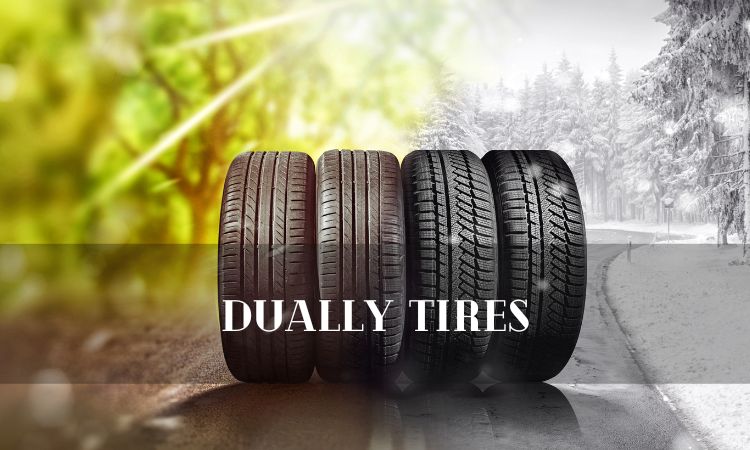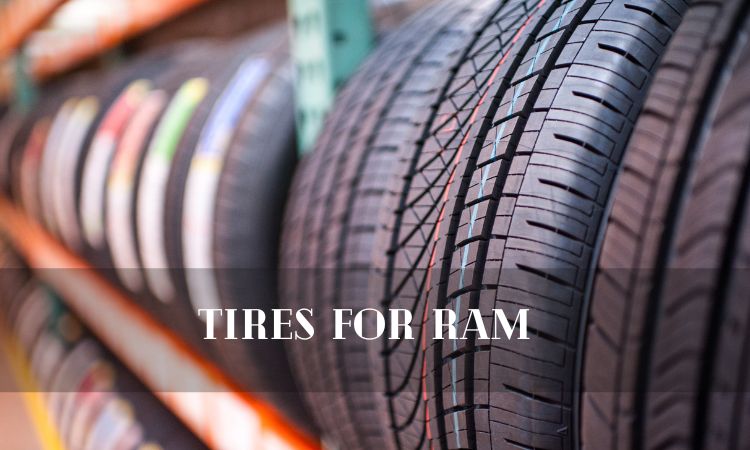Tire Warranty Options: Explained and Compared
Did you know that nearly 80% of drivers are unaware of the different tire warranty options available to them?
In this article, we will explore and compare various tire warranty options, providing you with the knowledge and information you need to make an informed decision.
From manufacturer's warranty coverage to road hazard protection plans and extended warranty options, we will break down the terms and conditions, helping you understand the benefits and limitations of each.
Stay informed and ensure the freedom to choose the best tire warranty for your needs.
Key Takeaways
- Tire warranty coverage includes manufacturer's warranty coverage, road hazard protection plans, tread life guarantees, and limited mileage warranty.
- Proper tire maintenance and regular inspections are important for maximizing tire warranty coverage, including maintaining recommended tire pressure, checking for signs of damage or wear, and rotating tires according to manufacturer's recommendations.
- Additional coverage options to consider include purchasing extended warranties for comprehensive coverage, road hazard warranties, and thoroughly reviewing terms and conditions.
- Tire warranties may include pro-rated replacement policies for unexpected wear and tear, as well as the option for partial tire refunds. It is important to understand the transferability of tire warranties and the benefits of transferring warranties, although exclusions may still apply after transfer of ownership.
Manufacturer's Warranty Coverage
While manufacturer's warranty coverage varies, it is crucial for consumers to carefully review the terms and conditions to ensure they understand the extent of the protection offered. Manufacturer's warranty limitations can include specific exclusions, such as damage caused by improper use or wear and tear. It is important for consumers to be aware of these limitations to avoid any misunderstandings or disappointments when filing a warranty claim.
The warranty claim process is typically straightforward, but it is essential to follow the prescribed steps to ensure a successful claim. Firstly, consumers should gather all necessary documentation, including proof of purchase and any supporting evidence of the issue. This documentation will be required when submitting a claim.
Next, consumers should contact the manufacturer or their authorized service center to initiate the warranty claim process. They will typically be required to provide detailed information about the problem and may be asked to provide additional documentation or evidence.
Once the claim is submitted, the manufacturer will assess the claim and determine whether it meets the warranty coverage criteria. If approved, the manufacturer will either repair, replace, or refund the product, depending on the terms of the warranty.
Road Hazard Protection Plans
Road hazard protection plans provide coverage for damage caused by road hazards, such as potholes or debris, and offer consumers an added layer of financial protection for their tires. These plans are designed to address the common risks and expenses associated with driving on roads, offering peace of mind and potential cost savings.
Here are four key benefits of road hazard protection plans:
- Repair and Replacement Coverage: Road hazard protection plans typically cover the cost of repairing or replacing tires damaged by road hazards. This can save consumers from having to bear the full financial burden of unexpected tire damage.
- Roadside Assistance: Many road hazard protection plans also include roadside assistance services. This can be especially helpful in situations where tire damage leaves a driver stranded on the side of the road.
- Financial Protection: Road hazards can cause significant damage to tires, resulting in expensive repairs or replacements. Having a road hazard protection plan in place can help minimize the financial impact of these unexpected expenses.
- Peace of Mind: Knowing that you have coverage in the event of tire damage caused by road hazards can provide peace of mind while driving. It allows you to focus on the road and enjoy the freedom of the open highway, without constantly worrying about potential tire damage.
Tread Life Guarantees
Tread life guarantees are an important aspect to consider when purchasing tires. These guarantees provide coverage for a specified duration and are typically based on specific tread wear conditions.
Understanding the terms and conditions of a tread life guarantee is essential to ensure that you choose the right warranty coverage for your needs.
Warranty Coverage Duration
The warranty coverage duration for most tire manufacturers ranges from 40,000 to 80,000 miles, providing customers with a sense of assurance and peace of mind. This means that if your tires experience any issues within this mileage range, you may be eligible for a warranty claim process.
However, it's important to note that warranty exclusions exist, and it's essential to understand them before making a claim. Here are some key points to consider:
- Warranty claim process: Familiarize yourself with the specific steps and requirements for submitting a warranty claim. This will ensure a smooth process and increase your chances of getting a favorable outcome.
- Warranty exclusions: Manufacturers often exclude certain types of damage from their warranty coverage, such as punctures, improper installation, or damage from accidents. Understanding these exclusions will help manage your expectations.
Tread Wear Conditions
An accurate assessment of tread wear conditions is crucial for determining the longevity and performance of a tire. Tread wear indicators are essential tools that help in evaluating the condition of tires. These indicators are small raised bars located in the main grooves of the tire. As the tire wears down, these bars become more visible, indicating that it is time to replace the tire.
Regularly checking the tread wear indicators is important to ensure that tires are replaced at the right time, preventing any accidents or performance issues.
Additionally, tire rotation frequency is another factor that affects tread wear. Rotating the tires regularly helps distribute the wear more evenly, extending the tire's lifespan. It is recommended to rotate the tires every 6,000 to 8,000 miles or as suggested by the manufacturer.
Limited Mileage Warranty
During the first 30,000 miles, the limited mileage warranty provides coverage for any tire damage caused by manufacturer defects. This means that if you experience any issues such as sidewall bubbles, tread separation, or other defects within this mileage range, the warranty will cover the cost of repair or replacement. However, it is important to note that mileage restrictions and warranty exclusions may apply.
Here are some key points to consider:
- Mileage restrictions: Some limited mileage warranties may have specific mileage restrictions, such as coverage up to 30,000 miles or 36 months from the date of purchase. It is crucial to understand these restrictions to ensure you are eligible for coverage.
- Warranty exclusions: Certain conditions may invalidate the limited mileage warranty, including improper tire maintenance, using the tires for racing or off-roading purposes, or damage caused by accidents or road hazards. It is essential to review the warranty terms and conditions to be aware of any exclusions.
- Regular maintenance: To maintain warranty coverage, it is important to follow the manufacturer's recommended tire maintenance schedule. This may include regular tire rotations, proper inflation, and regular inspection for any signs of damage or wear.
- Additional coverage options: If the limited mileage warranty does not provide sufficient coverage for your needs, you may consider purchasing additional coverage, such as an extended warranty or a road hazard warranty, to ensure comprehensive protection for your tires.
When considering tire warranty options, it is essential to thoroughly review the terms and conditions to understand the coverage provided, any mileage restrictions, and warranty exclusions. This will help you make an informed decision and ensure the longevity and performance of your tires.
Pro-rated Replacement Policies
Pro-rated replacement policies, offered by some tire manufacturers, provide partial refunds for tires that wear out prematurely. These policies typically take into account the remaining tread depth and the age of the tire to determine the refund amount.
However, it's important to note that pro-rated replacement policies may have limitations based on the tire's age and may not always be transferable to a new owner.
Partial Tire Refunds
The vehicle owners can receive a partial refund for their tires if they encounter unexpected wear and tear within the specified warranty period. This option provides customers with a sense of security, knowing that they will be compensated for any premature tire damage.
Here are four key points to consider regarding partial tire refunds:
- Increased Customer Satisfaction: Offering partial refunds demonstrates a commitment to customer satisfaction, ensuring that the manufacturer stands behind the quality of their products.
- Financial Relief: Partial refunds can help alleviate the financial burden of replacing damaged tires, providing customers with some financial relief.
- Fairness: Partial refunds are a fair solution for customers who experience unexpected tire wear and tear, as they are compensated for the portion of the tire's lifespan that was not utilized.
- Brand Reputation: By offering partial refunds, manufacturers can enhance their brand reputation and instill trust in customers, leading to increased loyalty and positive word-of-mouth.
Overall, partial tire refunds are a beneficial option that aims to ensure customer satisfaction and provide financial assistance when unexpected tire damage occurs.
Age-Related Coverage Limitations
While age-related coverage limitations may be a factor in tire warranties, it is important to consider the overall benefits and value of pro-rated replacement policies. Tire aging is a natural process that can affect the performance and safety of the tires. As a result, many tire manufacturers offer warranties that cover defects and premature wear. However, some warranties may exclude coverage for tires that have reached a certain age. This is done to ensure that customers are aware of the potential risks associated with older tires. It is important to note that age-related coverage limitations vary among different tire brands and models. To help paint a clearer picture, here is a comparison table showcasing the age-related coverage limitations of three popular tire brands:
| Tire Brand | Age-Related Coverage Limitations |
|---|---|
| Brand A | Tires over 6 years old |
| Brand B | Tires over 7 years old |
| Brand C | Tires over 5 years old |
It is crucial for consumers to carefully read and understand the warranty exclusions before purchasing tires, as this can affect their rights and potential refunds or replacements.
Warranty Transferability Options
Customers should consider their options for transferring warranties, as it can provide added flexibility and value for future owners. Transferring warranties allows the new owner to continue enjoying the benefits and protection offered by the warranty.
Here are four key points to consider regarding the warranty transfer process and the benefits of transferring tire warranties:
- Ease of transfer: Transferring a warranty is a simple process that can be done through the manufacturer or dealership.
- Increased resale value: A transferred warranty adds value to the vehicle, making it more attractive to potential buyers.
- Extended coverage: Transferring a tire warranty ensures that the new owner is covered for any future tire-related issues.
- Peace of mind: Knowing that the warranty can be transferred provides peace of mind to both the buyer and seller, as it guarantees protection even after ownership changes hands.
Tire Maintenance Programs
Regularly, businesses offering tire maintenance programs ensure the longevity and optimal performance of their customers' tires. Tire maintenance programs are designed to provide various benefits such as improved fuel efficiency, increased safety, and extended tire life. However, it is important for consumers to consider the costs associated with these programs before making a decision.
Below is a comparison table highlighting the benefits and costs of tire maintenance programs:
| Benefits of Tire Maintenance Programs | Costs of Tire Maintenance Programs |
|---|---|
| Improved fuel efficiency | Annual subscription fee |
| Increased safety | Additional service charges |
| Extended tire life | Replacement tire costs |
Tire maintenance programs offer benefits that can result in long-term savings. By regularly inspecting and maintaining tire pressure, businesses can help improve fuel efficiency, ultimately reducing the cost of fuel. Additionally, these programs focus on ensuring proper tire tread depth and alignment, which contributes to increased safety on the road and reduces the risk of accidents.
While the benefits of tire maintenance programs are clear, it is important for consumers to consider the costs involved. Most programs require an annual subscription fee, which can vary depending on the provider. Additionally, there may be additional charges for specific services such as tire rotations or repairs. In the event of tire replacement, customers may also be responsible for the cost of new tires.
Transferability of Warranty
The transferability of the warranty allows purchasers to transfer ownership of the tire maintenance program to another individual, ensuring continued coverage for the new owner's tires. This feature provides flexibility and peace of mind to tire owners, as it allows them to pass on the benefits of the warranty to someone else if they choose to sell or gift their tires.
Here are some key points to consider regarding the transferability of tire warranties:
- Simplified process: The transferability of the warranty typically involves a straightforward process, which may require the completion of a transfer form and the payment of a small fee. This ensures that the new owner can easily assume the coverage without any hassle.
- Continued coverage: By transferring the warranty, the new owner will be entitled to the same benefits and protections as the original purchaser. This means that they can still make warranty claims and have their tires repaired or replaced if they meet the necessary criteria.
- Warranty exclusions: It is important to note that certain warranty exclusions may still apply, even after the transfer of ownership. These exclusions are typically outlined in the warranty terms and conditions and may include damage caused by improper use, accidents, or wear and tear beyond a certain limit.
- Peace of mind: The transferability of the warranty provides peace of mind to both the original and new owners, as it ensures that the tires will remain covered even after a change in ownership. This can be particularly beneficial when selling or purchasing used tires.
Extended Warranty Options
We recommend considering the extended warranty options available to ensure that you have additional coverage beyond the standard warranty period. Extended warranties can provide numerous benefits and help protect your investment in case of unexpected repairs or failures. However, it is important to carefully evaluate the extended warranty cost and weigh it against the potential benefits it offers.
One of the main benefits of an extended warranty is the peace of mind it provides. Knowing that you are protected against costly repairs can alleviate stress and financial burden. Extended warranties often cover not only mechanical failures but also electrical components, ensuring comprehensive coverage for your vehicle.
Additionally, extended warranties can offer additional services such as roadside assistance and rental car reimbursement, which can be valuable in case of emergencies or breakdowns. These services can help you get back on the road quickly and minimize any inconvenience.
When considering the cost of an extended warranty, it is important to compare the coverage and benefits offered by different providers. Some warranties may have higher upfront costs but provide more comprehensive coverage, while others may have lower costs but limited coverage. Assess your needs and preferences to determine which option offers the best value for your specific situation.
Comparison of Warranty Terms and Conditions
Thoroughly comparing the warranty terms and conditions is essential to ensure that you understand the coverage and limitations provided by different providers. When it comes to tire warranties, there are several factors to consider before making a decision. Here are some key points to keep in mind:
- Coverage: Different manufacturers offer varying levels of coverage. It is important to compare what is included in the warranty, such as tread wear, road hazard protection, and mileage limits.
- Duration: The length of the warranty can vary greatly between manufacturers. Some may offer shorter warranties, while others may provide longer coverage. Consider your driving habits and the expected lifespan of your tires when making a decision.
- Claim process: Understanding the tire warranty claim process is crucial. Look for clear information on how to file a claim, what documentation is required, and how long it takes for the claim to be processed.
- Exclusions: Be aware of any exclusions or limitations outlined in the warranty. This could include factors such as improper tire maintenance, off-road use, or exceeding load capacities.
Frequently Asked Questions
Can I Purchase a Tire Warranty After I Have Already Bought My Tires?
Yes, it is possible to purchase a tire warranty after buying the tires. This type of warranty typically offers coverage for punctures and other types of damage that may occur during the lifespan of the tires.
Do Tire Warranties Cover Damage Caused by Off-Roading or Driving on Rough Terrains?
Tire warranties typically do not cover damage caused by off-roading or driving on rough terrains. However, it is important to review the specific terms and conditions of your warranty to determine if punctures are covered. Additionally, eligibility for tire warranty may vary for used vehicles.
Are There Any Restrictions on the Number of Times I Can Use My Road Hazard Protection Plan?
Road hazard coverage limitations may vary depending on the tire warranty provider. It is important to review the terms and conditions of the policy to understand any restrictions on the number of times the protection plan can be used. Additionally, familiarize yourself with the tire warranty claim process to ensure a smooth experience.
Can I Transfer My Tire Warranty to a New Vehicle if I Sell My Current One?
Yes, tire warranty transferability allows for the transfer of the warranty to a new vehicle if the current one is sold. This ensures continued coverage for tire damage due to accidents, providing peace of mind for the new owner.
Are There Any Additional Benefits or Perks Included in Tire Maintenance Programs, Apart From Regular Tire Inspections and Rotations?
Tire maintenance programs offer several benefits to customers, in addition to regular inspections and rotations. These programs may include perks such as roadside assistance, tire repair or replacement coverage, discounted or free services, and extended warranty options.
Conclusion
In conclusion, understanding tire warranty options is essential for consumers in order to make an informed decision when purchasing tires.
Manufacturer's warranty coverage, road hazard protection plans, tread life guarantees, limited mileage warranty, pro-rated replacement policies, tire maintenance programs, transferability of warranty, and extended warranty options are all important factors to consider.
By comparing the terms and conditions of different warranties, consumers can ensure they are getting the best value and protection for their tires.







